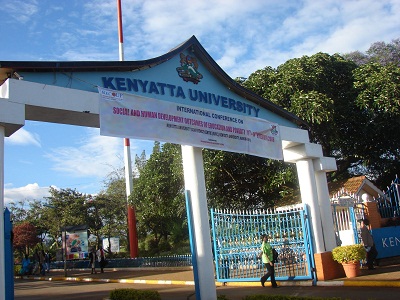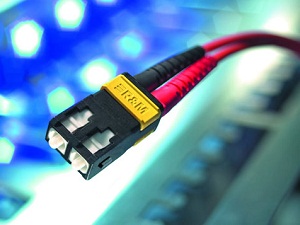
Photo Credit: antiimperialism.com
As South Sudan prepares for independence, the celebrations will be tempered by the grim reality that awaits them. The nation is plagued by numerous health burdens due to decades of civil war resulting in a lack of trained health workers and poor infrastructure, and inadequate health and education systems. One such burden is HIV/AIDS. Dr. Wichgoah Piny, the state’s HIV/AIDS commissioner said that about 116,000 people are known to be infected by the virus in South Sudan, 46,000 of which are being treated at hospitals within the region. This number lies in the middle ground when looking at the rest of Africa. East Africa generally has a higher prevalence whereas West Africa exhibits a lower prevalence of the disease. Some estimates say up to 4.7 million in South Sudan are at risk of acquiring the disease.
But those numbers could grow exponentially in the coming years. The World Health Organization (WHO) has described HIV/AIDS prevalence in South Sudan as “a ticking time bomb” and a threat which needs a cooperative and collective effort to fight in the new nation. Dr. Olivia Lomoro, the GoSS Undersecretary in the Ministry of Health who spoke at a South Sudan AIDS conference warned, “HIV/AIDS is a real issue in Southern Sudan despite the efforts we have put to fight it. It remains a threat and a time bomb we are expecting.”

UNAIDS officials in South Sudan
Dr. Mohamed Abdi, the WHO Director in South Sudan said that, “AIDS is a big problem in South Sudan and we need to fight it together.” He said that in more than two years he had worked in the region, very few people were getting treatment.
The consequences of a surge in HIV/AIDS could be catastrophic. The health infrastructure is already poor as it stands. An HIV/AIDS epidemic would paralyze the health sector for years and impair growth in other sectors. This could result in a crisis that no new government would be prepared to handle.
So in a sense, this is a defining moment for the future of health in South Sudan. As the new government establishes itself and its policies, it has the opportunity to be forward looking in the development of its health infrastructure. If HIV/AIDS is afforded a chance to “blow up” as WHO fears, the country will immediately be sunk further into a health crisis.
This presents an opportunistic entry point for the implementation of ICTs into the health sector in South Sudan.
Opportunities
A survey completed in 2006 by WHO revealed that over 910 health facilities existed in South Sudan. At the time, a majority of those facilities were claimed to be in a “deplorable state”. However, Dr. Lomoro recently pledged that Lakes state now has a new hospital which is going to be used as a teaching hospital to help in delivering quality health. She also mentioned investments through the Chinese government will be used to build new health centers and rehabilitate old ones. Incorporating ICTs in the rehabilitation process will pay dividends for the health sector in the future.
South Sudan is being held captive by a number of health issues such as measles, yellow fever and tuberculosis to name a few. Furthermore, South Sudan has up to 80% illiteracy rates in some parts, which make communicating through ICTs invaluable. The most basic forms of ICTs like radio, television and mobile phones can build a communication bridge for the illiterate to keep them connected and informed.
Dr. Lomoro also pointed out that the first target for the Ministry of Health in the Government of South Sudan is the training of health personnel in all the ten states of South Sudan in order to deliver quality health services to the population in a professional standard. One way to go about this would be to include ICT training in that workforce development. Taking this route would build workforce capacity and bolster the development of ICTs in the country.
The population returning from Sudan proper and surrounding African countries are also coming back with health work force skills. So there is a hope that as people return, their skills will be used in improving service delivery.
Several factors exist that support the idea of integrating ICT into the health infrastructure of South Sudan
Present ICT Usage
The market for ICTs is ripe and growing in South Sudan. The initiatives that would make a big impact in fighting HIV/AIDS using ICTs utilize mobile phones and radios as the media for communication. These media platforms are the largest in South Sudan.

Photo Credit: biztechafrica.com
A 2007 survey entitled “Media Access and Use in Southern Sudan,” showed that radio was the main source of information for the population as a whole with 59% of respondents citing the radio as a source of information, the highest out of all forms of media. Additionally, HIV/AIDS awareness radio programs make up 17% of the most popular radio programs. This indicates that HIV/AIDS discussions already have a base in South Sudan media.
Mobile phones on the other hand don’t enjoy such high rates of usage as radio due to 30% coverage rates. However, the mobile phone network has expanded considerably since 2005 and is predicted to keep expanding in the near future. Also noteworthy is that only 14% of South Sudanese get their information from newspapers and 13% from television according to a report. It’s clear that radio and mobile phones are the most widely used avenues of communication in South Sudan.
Plans to expand broadband cables
As recently reported, South Sudan is on the shortlist to receive fiber optic broadband cables. Broadband services make it possible to interconnect affiliated healthcare facilities around the country so that they can utilize and share scarce human and technical equipment resources to deliver quality and affordable healthcare services. These cables can establish a foundation for ICTs not just in health, but for all sectors in South Sudan.
Past Successful HIV/AIDS Programs
South Sudan won’t be the guinea pig for using ICTs for HIV/AIDS either. There have been quite a few successful HIV/AIDS programs in the past that succeeded in similar environments:
- Targeting Nomadic Populations – USAID and other external NGO’s worked together in Nepal in 2005 to introduce a radio program on HIV/AIDS awareness by integrating entertainment into its programming
- Capitalizing on existing media penetration:
o Radio – Tanzania also introduced the Tunajali HIV/AIDS Care and Treatment Radio Program in 2010 with the help of PEPFAR.
o Mobile – Two mobile phone programs, Text to Change(TTC) and Freedom HIV/AIDS used mobile phones to reach thousands of people to educate them on HIV/AIDS

Photo Credit: freedom HIV/AIDS
South Sudan should approach some of the major NGO’s on the ground to help implement these initiatives that use ICTs. Organizations like USAID, WHO, UNICEF and the UN have spearheaded many initiatives like the ones described above in the developing world. They should at the very least try to do the same in South Sudan. They need to realize the opportunity at hand.
Possible ICT Policy
So the framework to set South Sudan off on the right foot is present just as they kick off their sovereignty. However, an HIV/AIDS epidemic is a threat. The markets for intervention exist, proven initiatives exist and they can be adopted using the aforementioned plans to establish new broadband cables. All of the stars have aligned. The tricky part is getting officials to the table and churning out an action plan. This will involve NGO officials talking with South Sudanese Government officials and making this opportunity a priority.
South Sudan has already seen its darkest days. They want to move now from being a hub for relief efforts to a hub for development. The health sector can benefit tremendously from using ICTs to prevent an HIV/AIDS disaster. Once HIV/AIDS is under control, the ICTs can be utilized strategically to tackle other health issues, as they are being done all over Africa and the developing world. If not, it may not be long before South Sudan encounters its darkest days once again.






















































